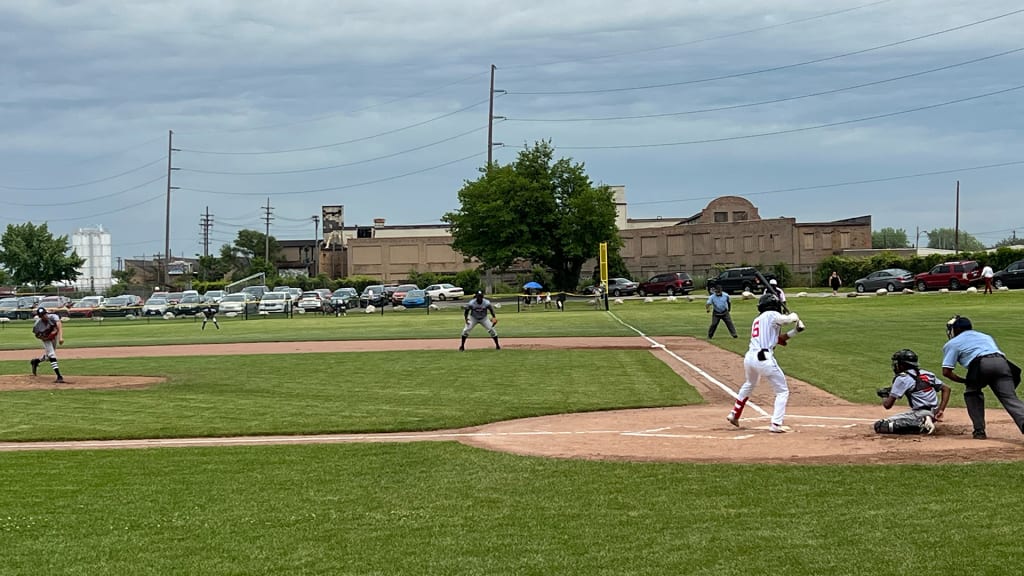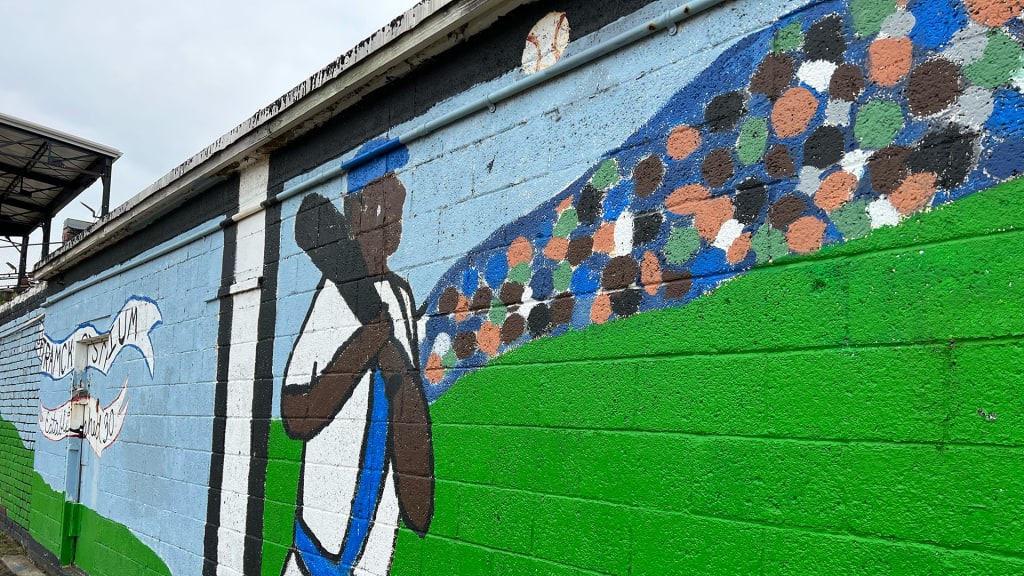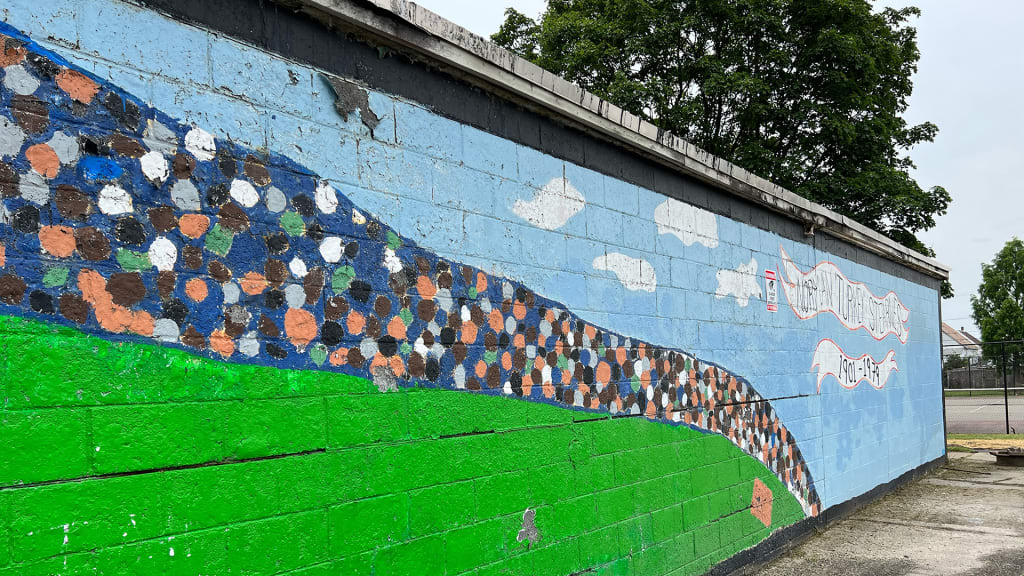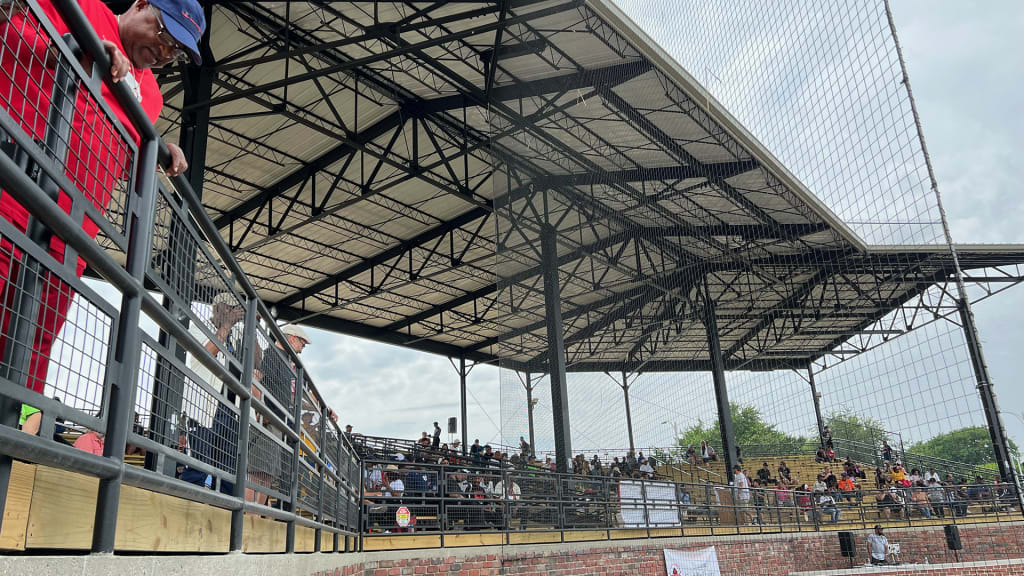
HAMTRAMCK, Mich. -- The sounds of baseball brought new life to an old ballfield Monday afternoon. Dugouts cheered each hit and jeered each opposing pitcher. Mitts popped with each fastball. Foul balls clanked off the metal roof over the grandstand.
This is how Hamtramck Stadium sounded in the 1930s, when the Negro Leagues’ Detroit Stars called it home. This is how it sounded again Monday, thanks to a grassroots effort to renovate the historic ballpark.
“We are making history here in Hamtramck,” Hamtramck Historical Museum director Greg Kowalski said at the stadium’s rededication Monday. “This is a very, very historic occasion.”
As another observer pointed out, this is hallowed ground.

As teams of high school stars from Detroit and Chicago, wearing the respective uniforms of the Detroit Stars and Chicago American Giants, took their swings Monday, it was incredible to think they were on the same field where Hall of Famers Turkey Stearnes, Josh Gibson, Cool Papa Bell and Satchel Paige once played. It was just as amazing to think they were playing on a field that had been abandoned, despite being one of just a handful of former Negro Leagues ballparks still standing.
Rock star Jack White, before his music career took off, used to take lunch breaks there from his job at a nearby upholstery stop before discovering the history; he took part in a benefit game on the field in 2019 to help raise awareness for preserving the place.
The renovation of Hamtramck Stadium was a $2.6 million project, funded through a combination of grants and donations from public sources such as Wayne County, the Michigan Economic Development Corporation and the National Park Service, and private sources such as the Detroit Tigers Foundation, the Ralph C. Wilson Jr. Foundation and the Kresge Foundation. It was the culmination of nearly a decade-long effort by the Friends of Historic Hamtramck Stadium -- co-founded by longtime baseball author, editor and historian Gary Gillette -- to preserve and revitalize the park after it was placed on the National Register of Historic Places in 2012.

While the field was leveled and reseeded by the volunteer grounds crew, the renovation of the structure included new dugouts and a refurbishment of the historic grandstand behind home plate. The original brick façade and steel beams were preserved, while new wooden bleachers were installed.
“Today we see how the years of vision by a few, the years of planning by many, and the years of both struggle and cooperation between government, organizations and community can have a major impact,” Hamtramck mayor Amer Ghalib said.

Among those who spoke at Monday’s rededication ceremony was Ron Teasley, one of the few living players from the Major Negro Leagues era (1920-1948). Teasley, a standout player in the 1940s and still a record-holder at Detroit’s Wayne State University, played with the New York Cubans in 1948 as well as in the Brooklyn Dodgers farm system. He later passed on his love for the game as a coach for over 30 years, most notably at Detroit’s famed Northwestern High School.
“When I was 7 or 8 years old, I can recall attending a game at the stadium,” Teasley said. “The place was jammed. People came here from church to watch baseball.”

Also on hand were Joyce Stearnes Thompson and Rosilyn Stearnes-Brown, daughters of Turkey Stearnes, for whom the field is named.
Moving forward, the ballpark is expected to host local youth and high school games, and possibly tournaments, to bring the old field back to life.
